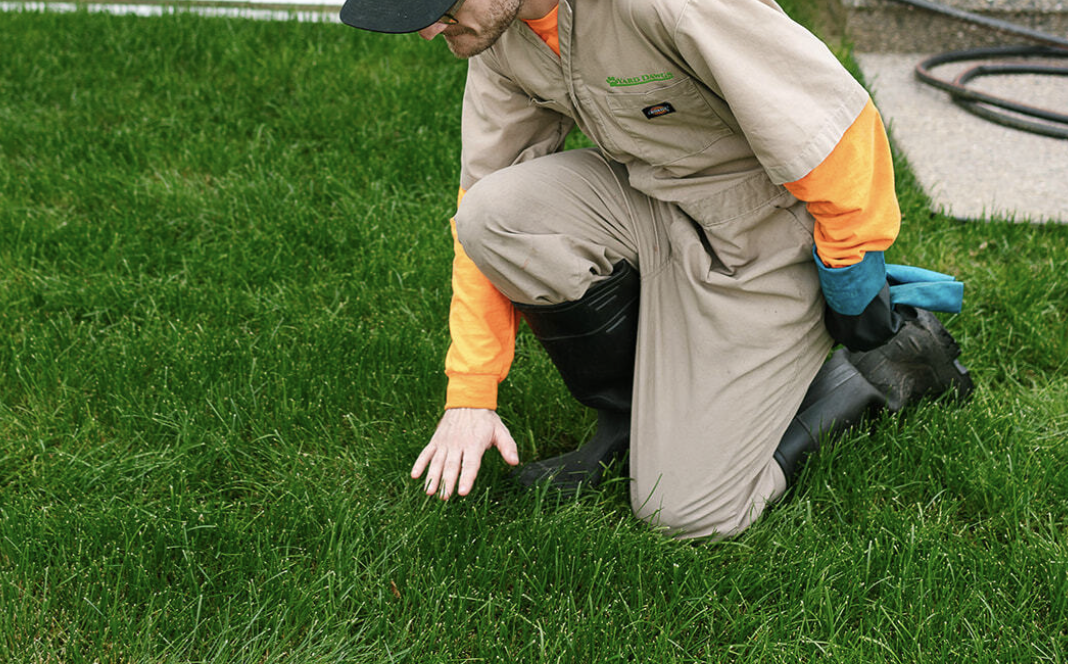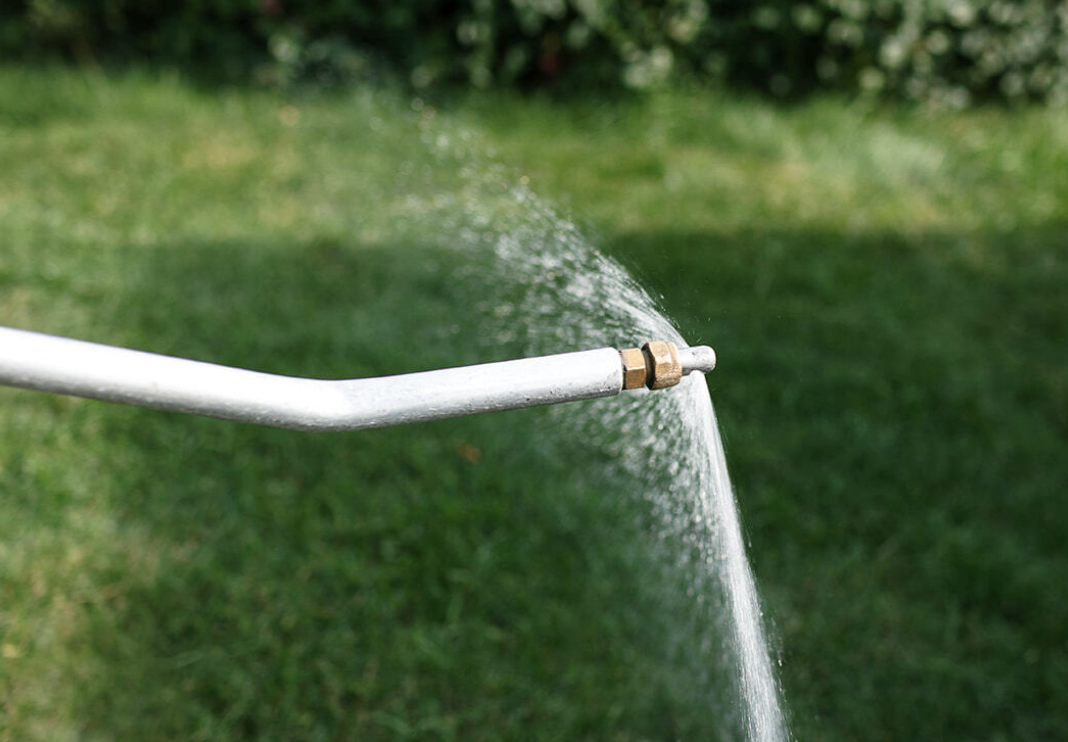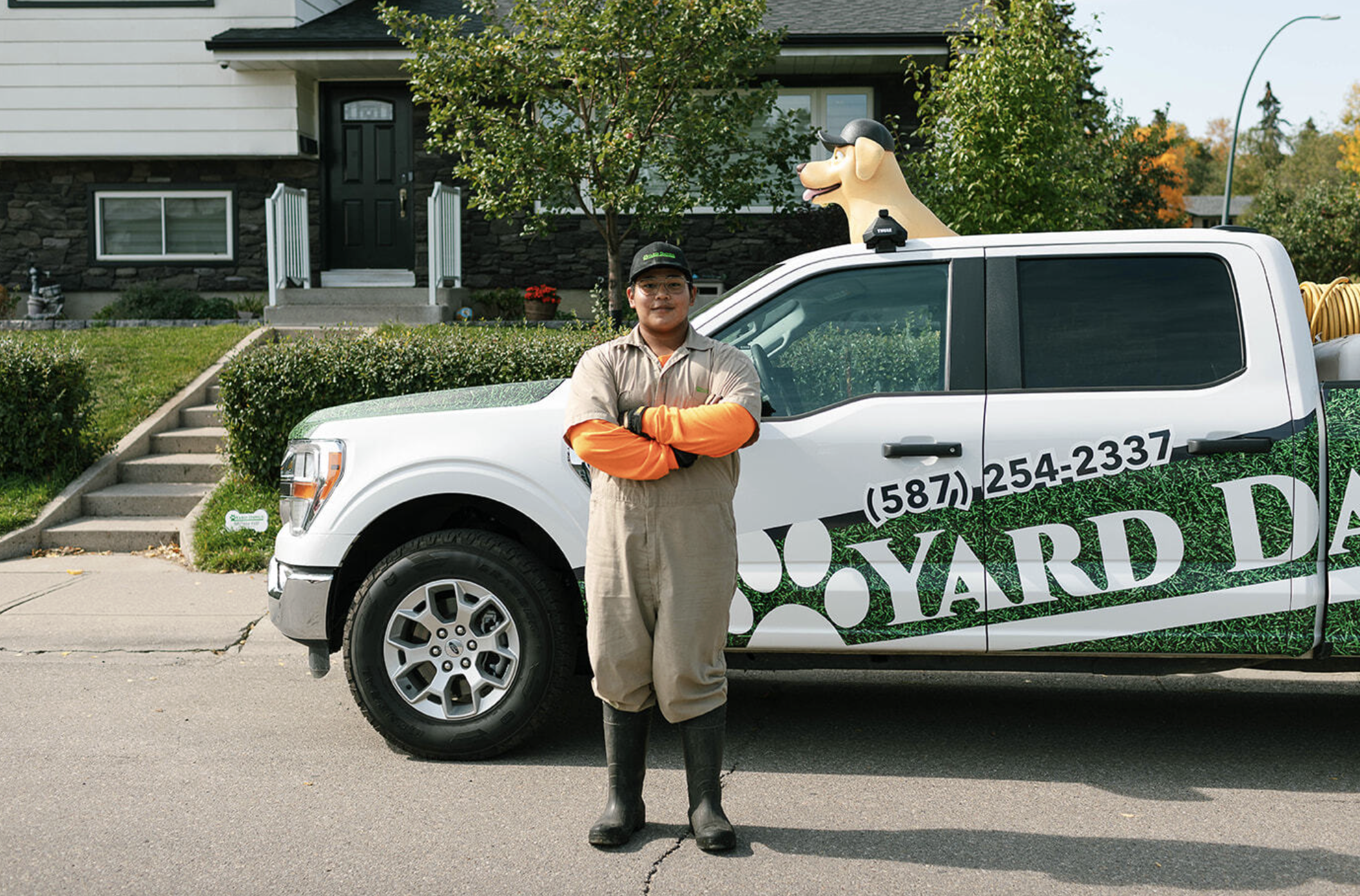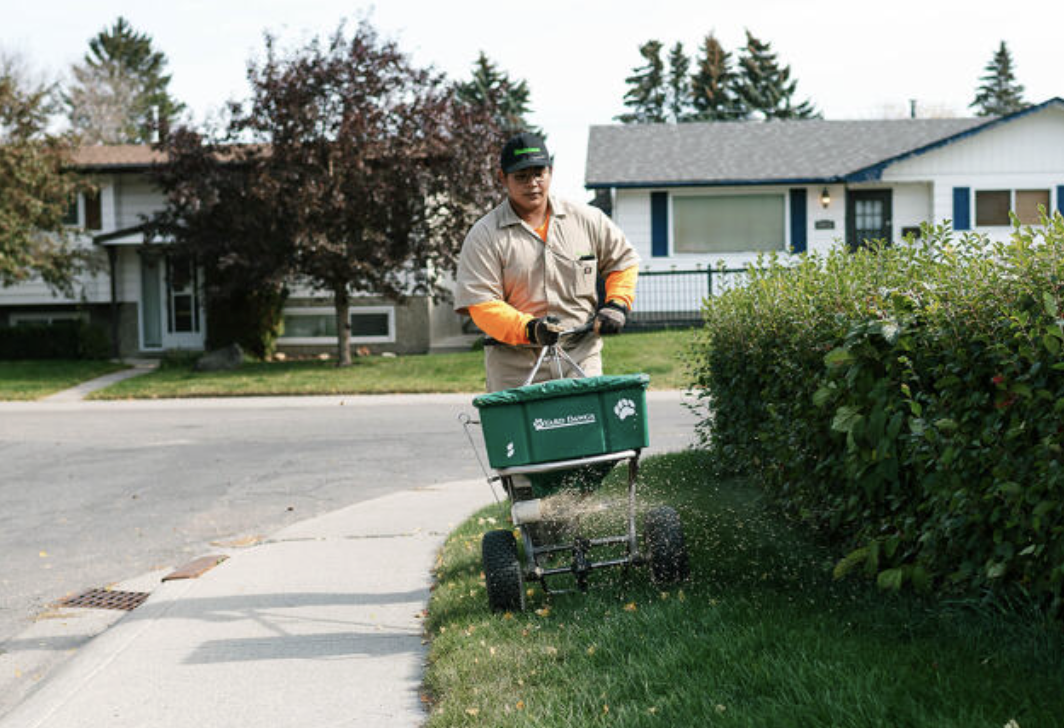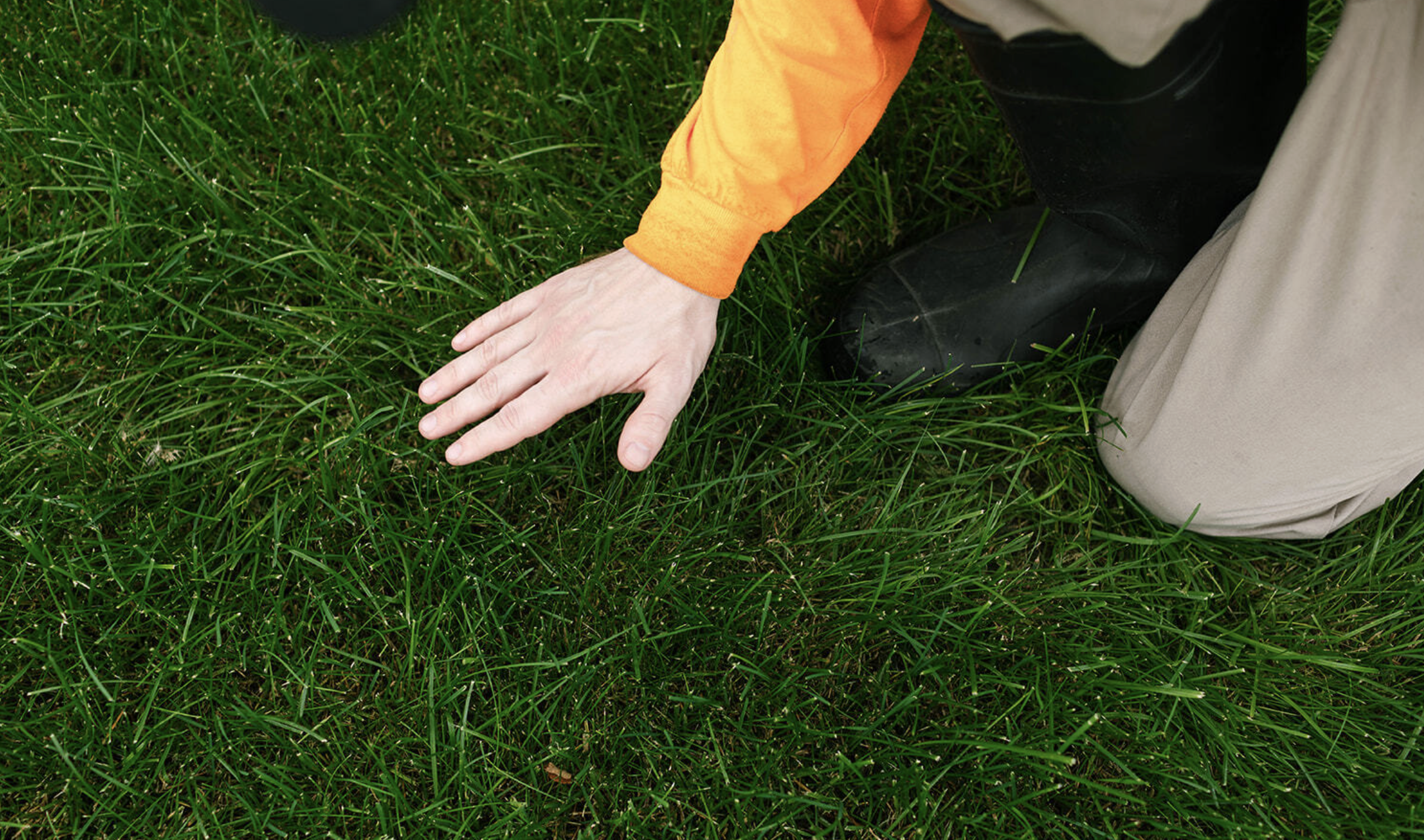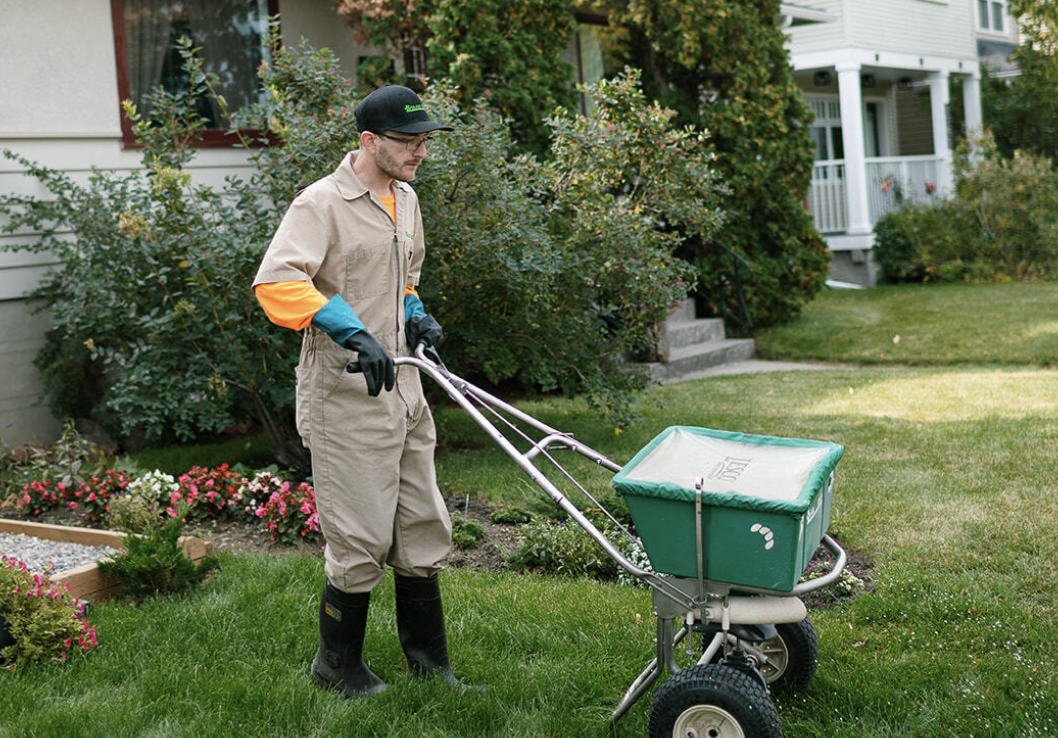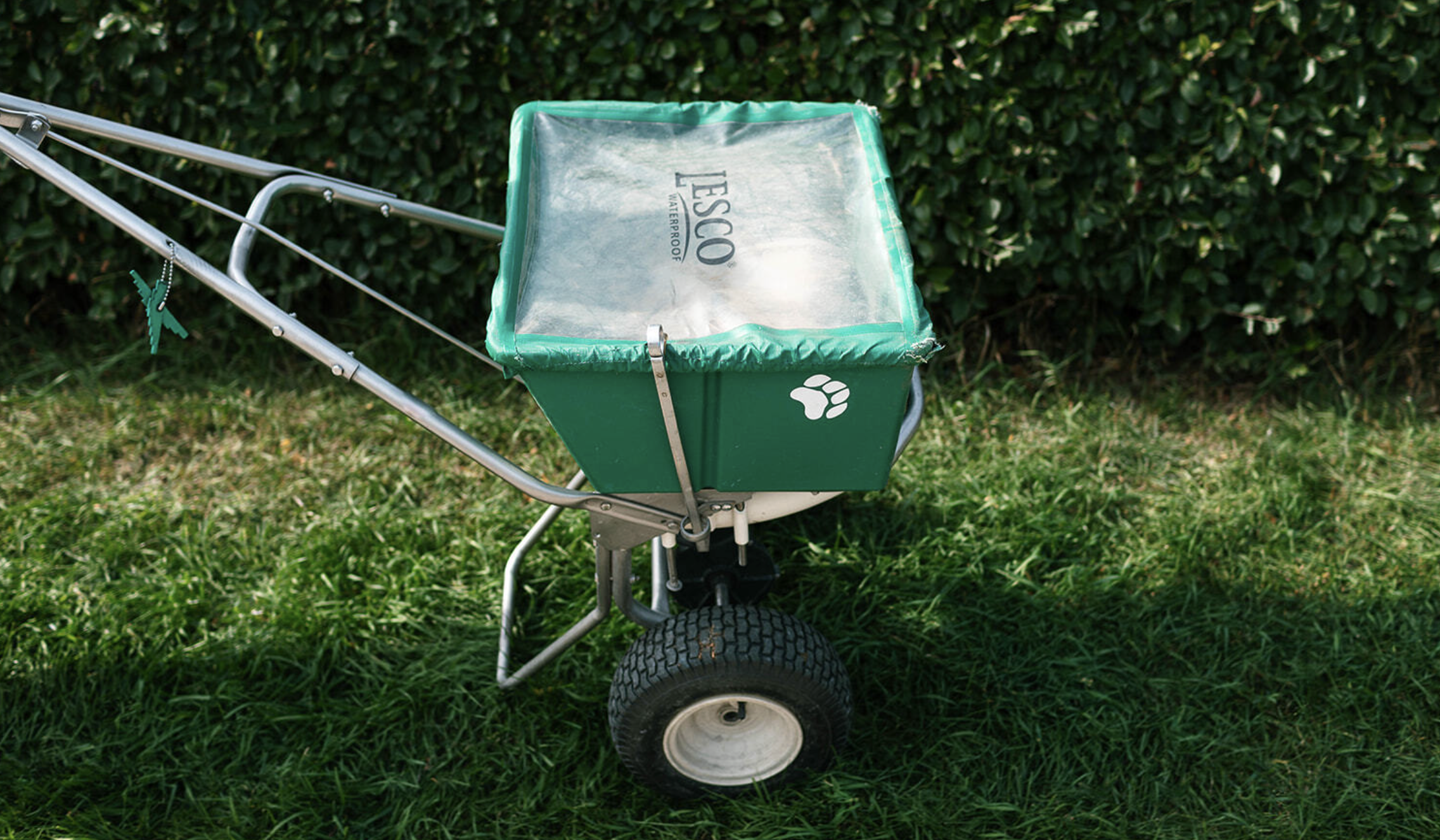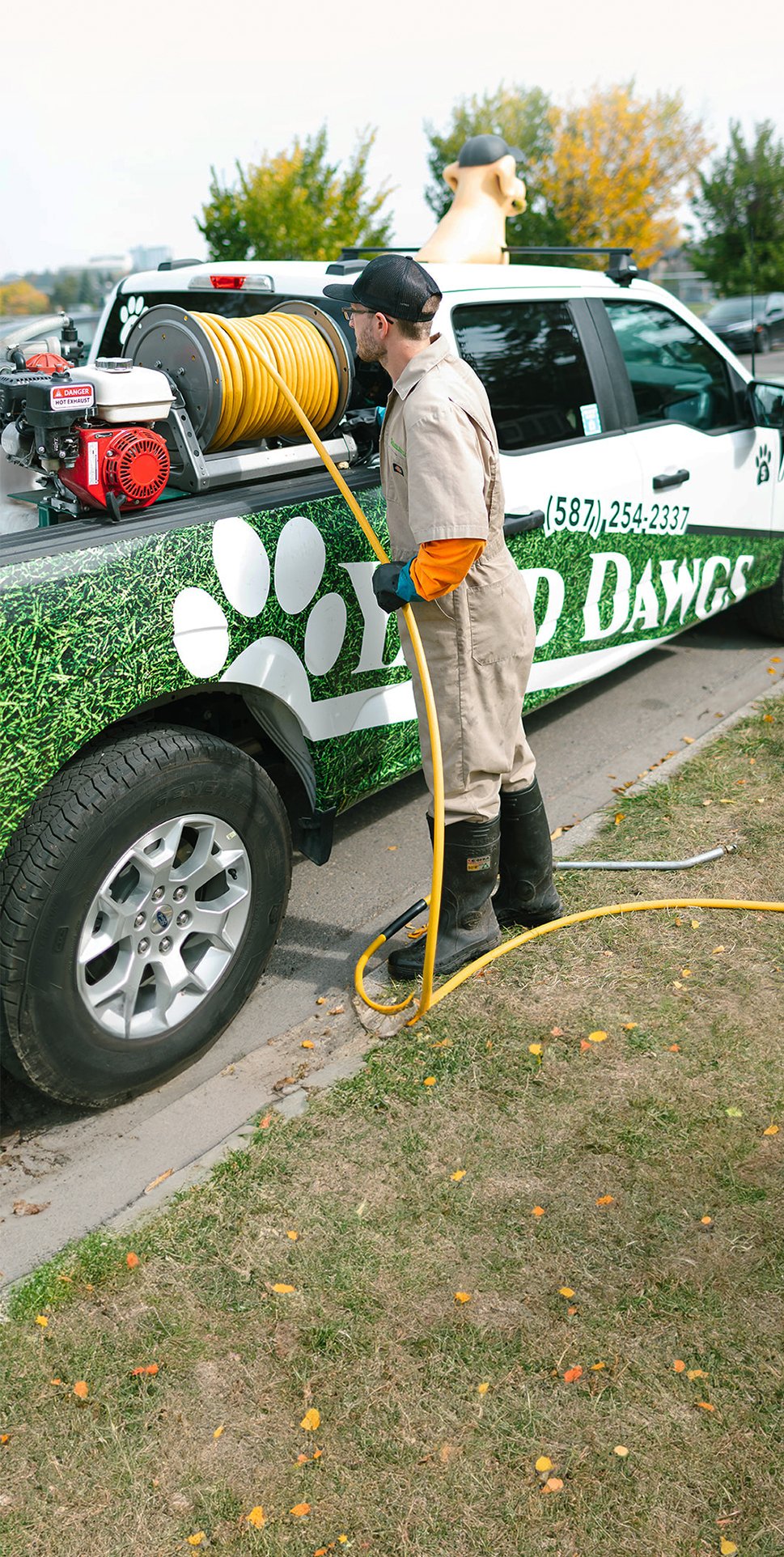What Is Creeping Bellflower?
.png?width=670&name=Untitled%20design%20(14).png)
Creeping bellflower is a common occurrence across lawns in Alberta. Originally it came from Europe but was then introduced to North America as a flower. It soon started to spread rapidly and invade natural plant communities.
Believe it or not, it’s actually still possible to buy creeping bellflower for your garden. The reviews, however, are peppered with warnings about the potential headaches this flower can cause down the road.
If it isn’t under control, creeping bellflower can travel under fences, concrete, lawns, gardens and can easily spread from one neighbour to another. On top of that, it can survive a wide range of temperatures, including droughts and severe cold. It is also resistant to many chemicals, even those that are used to kill other kinds of noxious weeds.

For the first couple years the plant is well behaved and stays in place. However, the root will grow about a foot deep into the soil. By the time you notice the problem it’s already too late. The creeping bellflower will be starting to make its way into your yard, sprouting in the grass.
It has recently changed from a flower to a noxious weed that needs to be controlled in Alberta cities. Bylaw officers have started handing out warnings to residential and commercial residents when the weed begins to grow out of control in the neighbourhood.
This flower, or rather weed, doesn’t sleep. It thrives in wet and dry soils as well as sunny and wet weather. It spreads both by its root system or its leaves.
Even a small shred of rhizome (root) is enough to produce up to 15,000 seeds. That can be incredible difficult to combat. The City of Calgary explicitly states once out of your property, the bellflower should be bagged and sent to the landfill. Do not compost it!
Why is Creeping Bellflower Bad?
Creeping bellflower is bad for a number of reasons. Not only is it invasive, but it also causes significant harm to your lawn and garden by outcompeting native plants for nutrients, water, and space. It is particularly dangerous because of its deep root system, which makes it difficult to fully remove without consistent effort. As it spreads quickly through rhizomes, it can take over large areas, displacing other plants and damaging the overall health of your garden. Additionally, the plant is highly resistant to many common herbicides, making it more challenging to control once established.
Why Creeping Bellflower is a Problem in Alberta and Calgary?
Creeping bellflower is a serious issue in Calgary and across Alberta due to its invasive nature. Originally from Europe, it quickly spread to North America, causing havoc in local gardens and natural plant communities. In Calgary, this weed has been particularly problematic, as it thrives in a wide range of environments, from dry lawns to wet soils. The plant’s ability to spread quickly through its rhizome system makes it a challenging weed to control. Once it starts invading, it's difficult to get rid of, often requiring ongoing effort to prevent further spread.
How To Get Rid Of Creeping Bellflower
We have a five-step process on the most effective way to get rid of creeping bellflower. Depending on the stage of the creeping bellflower you may not be able to do it yourself, and you’d have to hire a landscaping company to remove them. If you're unsure how to kill creeping bellflower on your own, depending on the stage of the infestation, you may need to hire a professional to remove the weed.
Step #1: Pull Out Any Unexpected Bellflower That You See
This is specifically for the earliest stages of this plant. If you see any bellflower in areas that you didn’t plant, you should pull the flower immediately. This will prevent this plant from spreading seeds elsewhere. If you’ve completed this, continue to step number two.
Step #2: Dig Out The Creeping Bellflower And The Area Around It
The job isn’t finished after pulling the plant. The roots of this weed go down almost a foot and every part of it needs to be removed. If even a small piece of the root remains, you’ll see this plant re-emerge.
Dig a six-inch radius around the center of the plant to get all the roots underneath. To prevent the bellflower from spreading, remove every part of the root.
Step #3: Use The Lasagna Method
It is an old but effective trick. It’s highly effective, in the early stages without using any chemicals.
-
Firstly, pull out the lawn mower and cut down any weed that is overgrown.
-
Once that’s done begin covering the area with 5 to 8 sheets of newspaper. Make sure that any area that you want killed is completely covered in newspaper; the more the better. You can use cardboard if you’d like but newspaper will break down faster.
-
Lightly wet the newspaper so that it won’t blow away and add 3 to 6 inches of an organic material. It can be mulch, grass clippings, coffee grinds, or topsoil.
Depending on the climate, it can take between 1 to 3 months for everything to decompose and the soil to be free of weeds. This process miraculously improves the soil and makes it ready to plant new flowers.
Step #4: Use A Chemical Treatment On the Bellflower
This is for when the weed is more far gone. There are many different products that can be used and purchased at a local hardware store. These options include Weed B Gon, Round Up or Concentrated Acetic Acid (Vinegar).
Each of these would prevent the creeping bellflower from growing further. They will not eliminate the weeds since each is a residential grade product. It will only help to stop the spread.
Stopping Creeping Bellflower From Spreading
.png?width=670&name=Untitled%20design%20(15).png)
Don’t lose hope, it took one homeowner four years of pulling the weed from his lawn until it finally disappeared. John Duncan is a horticulturist with Greengate Garden Centre. In his interview with the CBC, he talked about this weed taking over the gardens across Alberta.
“It’s a lot of pulling no matter what you do. And anytime you break the root, another plant will start. You just got to keep up on it… I know when I first bought my house, if I had realized that it was in my yard, I probably wouldn’t have bought it … It’s an aggressive plant. It took me four years of pulling to finally get it rid out of my yard.”
Because creeping bellflower is from Europe, it has no natural predators to control it here. When it’s put into nice garden soil it absolutely thrives – it doesn’t have to work hard at all.
To remove these plants with extra caution, dead head the flowers and cut off the seed heads. Do not compost bellflowers, they will survive. Bag them and put them in the garbage.
Remember to completely remove the entire root. Be patient and persistent, it takes time to get rid of this plant.







.png)

